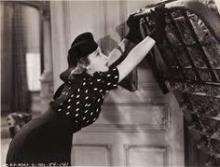The history of the lifting bed

Few people think about the historical path the bed went through until it took on a modern look.
In ancient times, people slept on the ground, making themselves a bed of grass, twigs and animal skins. With the advent of houses, in the Middle Ages, they began to allocate separate rooms for sleeping, made an elevation covered with fur, fabric, something like a prototype of a bed.
The first to raise the bed above the ground were the ancient Egyptians. Their bed consisted of a wooden frame with a stretched net made of ropes. The frame was installed on four legs, in the form of the paws of a predatory animal. It turned out to be something like a modern bed. People realized that if you raise the sleeping place higher, it will be warmer, drafts will blow less.
In ancient Greece, there was a bed for sleeping and a bed for eating. It was considered good form to eat while reclining. The bed, which was instead of a table, was a bronze frame mounted on four or six curly legs. Above, the bed was covered with a mattress, bedspread and pillows. The bed had a low headboard decorated with a sculptural image.
In the Middle East, the bed was decorated with curtains to keep out insects. In the 12th century, a canopy is hung over the bed - an expensive fabric decorated with patterns. The bed is something like a chest without a lid, with a small depression in the center of the side walls. In the XIV-XV centuries, the canopy began to be hung from the frame, held on by the extension of the legs of the bed, curtains were drawn on four sides for warmth.
In Europe, in the Middle Ages, only the highest nobility slept on beds - the owners, and all the servants slept on the floor in the same room. In the 15th century, the bed became a ceremonial setting, and the bedroom turned into a living room during the day. In Europe, in the 17th century, the bed, which resembled a stone dais, began to be decorated. Craftsmen-furniture makers now use expensive types of wood in the manufacture of beds, decorate with paintings, carvings, and various figures. The canopy is sewn from an expensive fabric, embroidered with gold threads and decorated with tassels. The beds of poor people were usually large, because the whole family slept on them.
Beds of the 18th century are varied, but they are divided into two types: a “French” bed, located in the middle of the bedroom, it had one back at the head, and a “Polish” bed with two backs, standing in a niche in the wall, fenced off from the main part by a curtain. They were decorated with gilding, carving, canopy. At the end of the 18th century, the bed acquires a simple, austere shape, it has two walls of the same height, and is installed along the wall.
In 1824, Devagle, a French master, invented a spring bed net; instead of wood, metal pipes began to be used.
These beds were made for hospitals and orphanages, but due to their simplicity and price, they sold well and were popular until the middle of the 20th century in the Soviet Union.
At the beginning of the 17th century, beds appeared in Russia. They were especially widespread under Peter I. He introduced not only European outfits, but also European home furnishings. Therefore, in court and merchant houses, it was necessary to sleep on beds. The beds were with a feather bed and lots of pillows. But this did not affect the poor peasant families, they continued to sleep on wooden floors - beds, chests, benches and stoves, which kept warm until morning.
Modern people are more fortunate than those who lived before. We have the opportunity to choose a bed with different functions and designs. Recently, lifting beds have become widespread. During the day, the lifting bed is not visible, it is hidden behind the closet, and you use the free space. And at night, thanks to the Italian spring mechanism, reliable operation of the lifting bed is achieved.
The lifting mechanism is universal and is designed for 20,000 opening and closing cycles, which can be equivalent to several tens of years of flawless operation. The lifting mechanism is installed in different capacities, depending on the weight and size of the lifting bed.
You can buy a lifting bed in Kiev, single or double, located both horizontally and vertically. It all depends on the available space in your bedroom. After all, a lifting bed with a vertical rise, inconspicuous during the day, when disassembled, will take at least two meters. So maybe it's better to place a horizontal bed in a narrow room? It will be located along the wall, and you will be able to move around the bedroom, even when the bed is disassembled. The mattress can be installed according to your wishes with any filling. The mattress and bedding can be fixed with special straps, then when the bed is transformed into a wardrobe, they will remain in place, and you will not clean them every morning.
You can buy a lifting bed in Kiev at the SV-mebli company, whose employees have been manufacturing and installing it for more than five years. The company's specialists have created lifting bed models that will fit any interior objects. More than three hundred projects with a lifting bed have been developed, taking into account the area and arrangement of rooms, functional purpose and, of course, price.
Due to the fact that the company has a wide range of basic and auxiliary materials - transparent and frosted glass, mirrors, colored plastic, rattan, etc., you can bring to life your most non-standard and original solutions.
